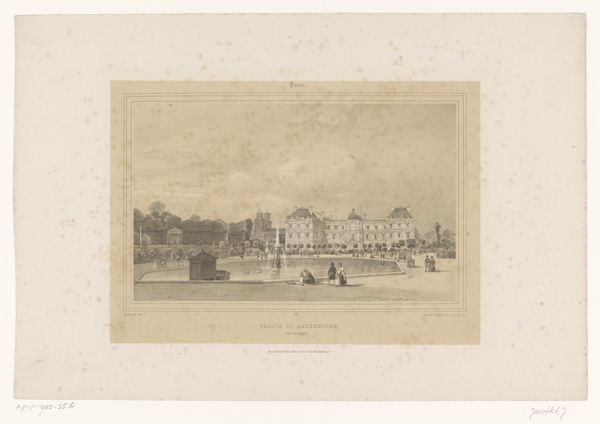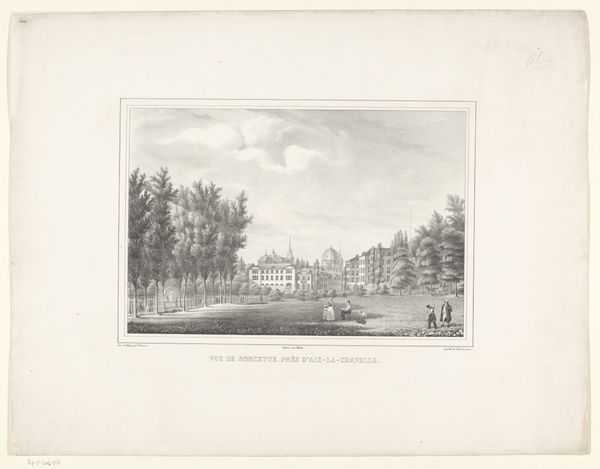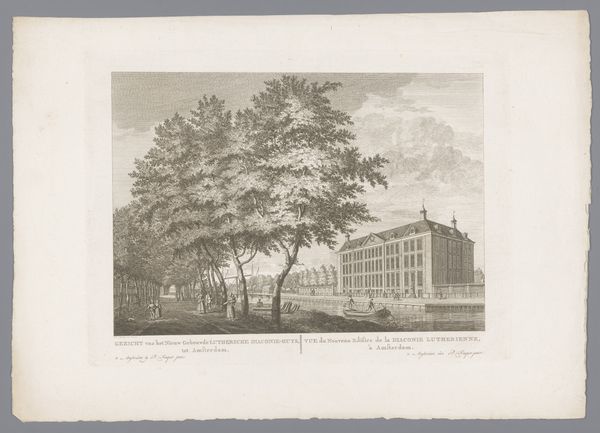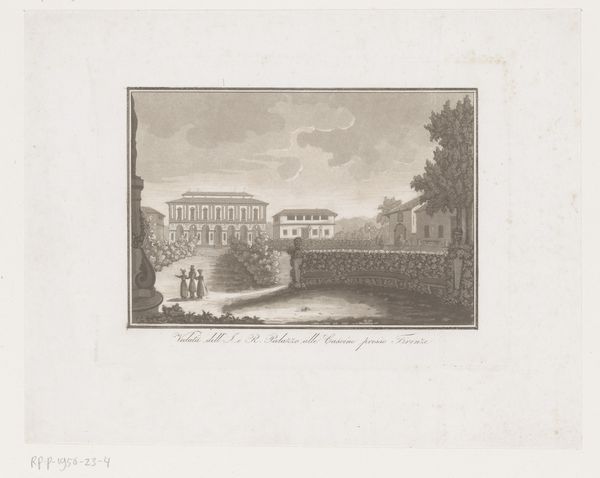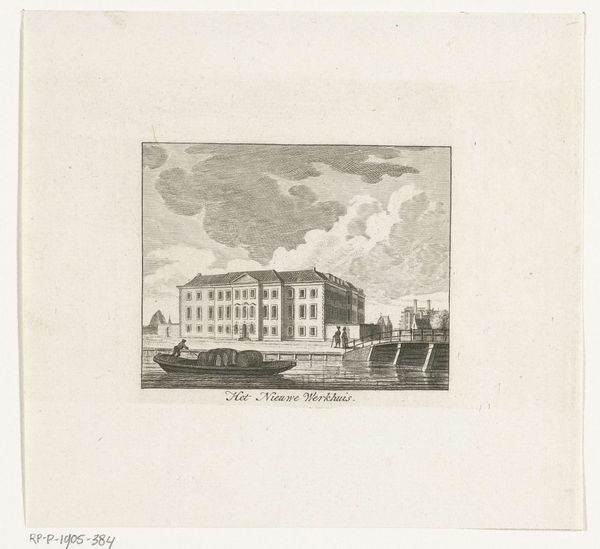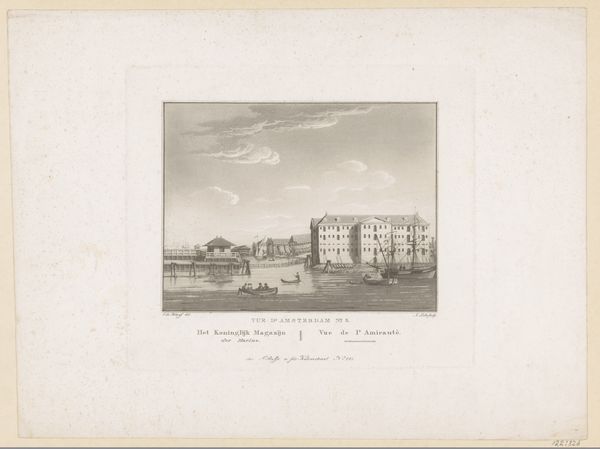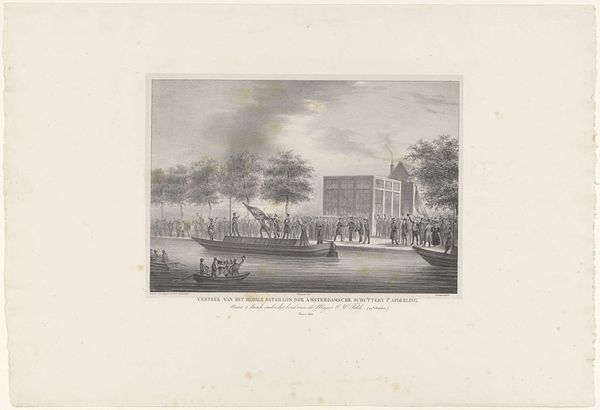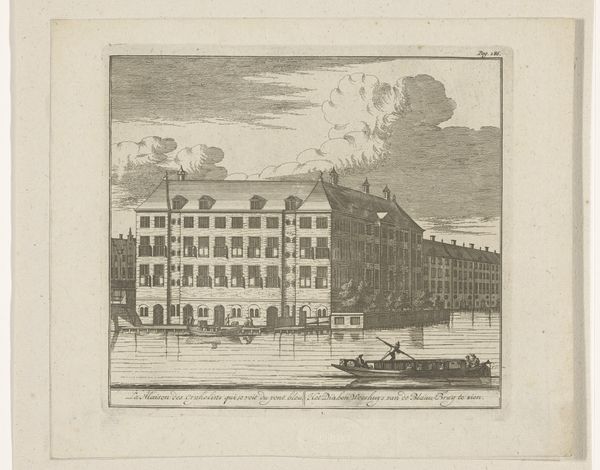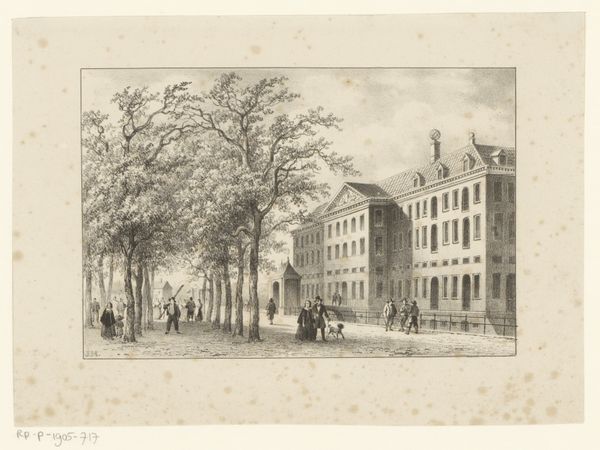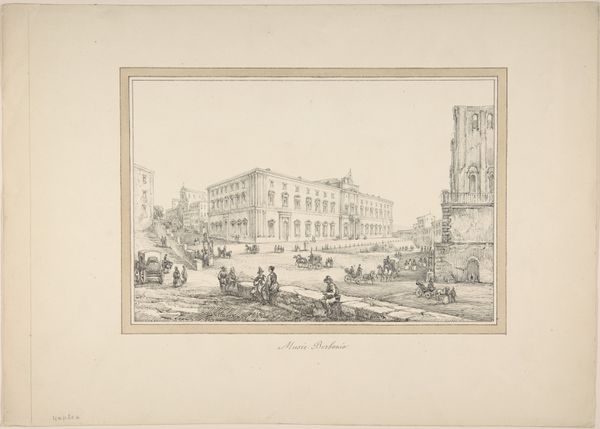
Gezicht op de Paleis van Justitie waarheen de gewonden uit de Tiendaagse Veldtocht worden overgebracht, 1831. Possibly 1865
0:00
0:00
Dimensions: height 470 mm, width 550 mm
Copyright: Rijks Museum: Open Domain
This anonymous print from 1831 depicts the transport of wounded soldiers to the Palace of Justice, following the Ten Days' Campaign. Note the stoic architecture of the Palace. Buildings such as this one are not just bricks and mortar; they are symbols of law and order. This architectural representation of power is reminiscent of ancient Roman forums, places that served as the epicentre of public life. The classical pillars remind us of an idealised past, evoking notions of justice, governance and the values of civic society. Yet, the juxtaposition of this powerful structure with the vulnerable wounded soldiers creates a tension. This contrast underscores the duality inherent in human conflict, a recurring theme throughout history. The wounded hint at human suffering and the cost of conflict, contrasting with the imposing stability of the institution. It is a reminder that even within the most orderly of societies, chaos and suffering can emerge, highlighting the cyclical nature of history and its indelible mark on human experience.
Comments
No comments
Be the first to comment and join the conversation on the ultimate creative platform.

